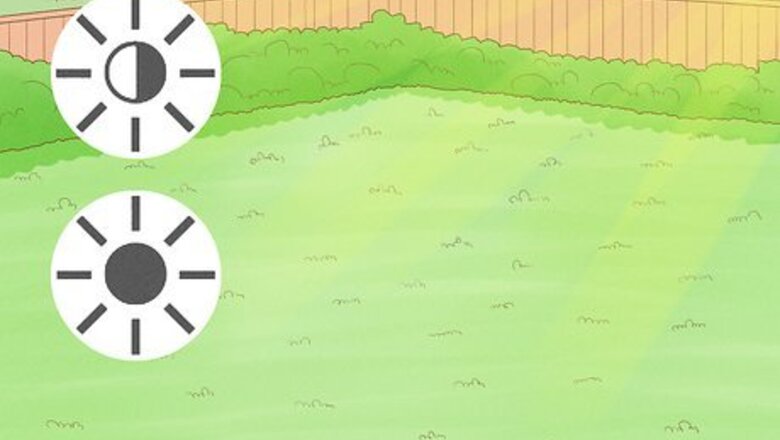
views
X
Research source
Since monkey grass spreads its roots and grows out from where you originally plant it, it’s perfect for transplanting. Dig up chunks of the plant, including the roots, and replant them in shady areas. Plant multiple clumps of grass far enough apart that they can spread out.
Working the Planting Location
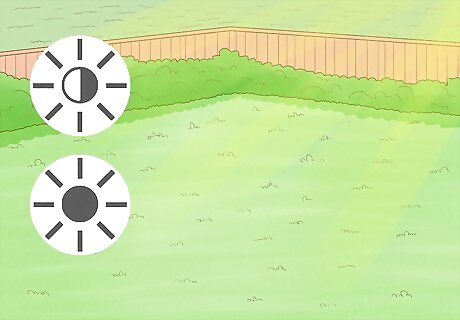
Find a spot with filtered sun or complete shade. Monkey grass does not need full sunlight to grow. Too much sun actually harms it. Plant it near or under a tree or bush, or against your house or deck. Pick a spot that is in the shade more than it’s in the sun.
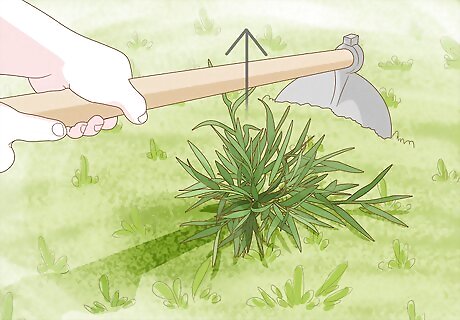
Clear out old weeds and growth. If there are lots of weeds in the area you want to plant, pull them out, down to the root. This gives the monkey grass room to expand. As long as you pull most of the weed out, the root system will break up more when you turn the soil over. It’s okay to leave actual plants in the area, because monkey grass grows well alongside other plants.
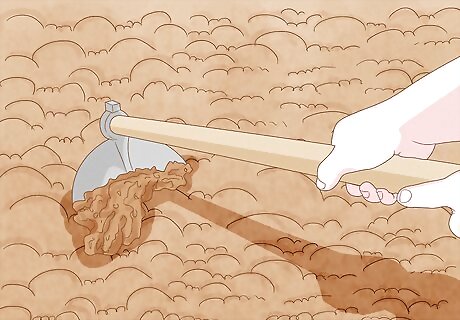
Chop up the soil to loosen it. Monkey grass needs soil that drains well, so packed down soil needs to be turned over. Use a shovel, hoe, or tiller to mix the soil up and loosen it. If the soil is obviously dry, water it before and during the process of turning it over. If you’ve tilled the area in the recent past, don’t worry about doing it again.
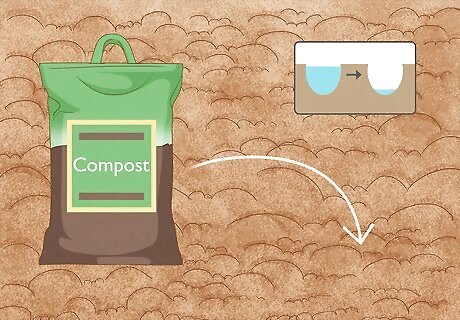
Add compost or manure into the soil. As you chop the soil up to create better drainage, mix some rotten brown matter compost or manure into the soil. There’s no perfect ratio, but the compost or manure should be less than half of the mixture.
Transplanting Live Plants
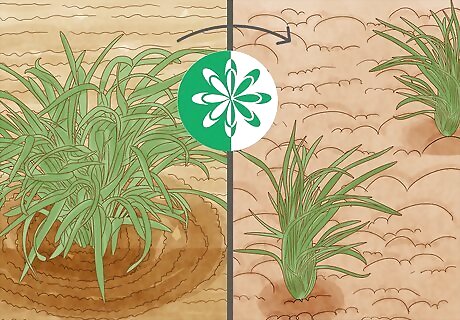
Replant monkey grass in the early spring before new growth. Monkey grass goes dormant during the winter months, if you live somewhere with cold winters. After the final thaw before spring, the plant comes out of dormancy. Right around this time is best for transplanting. If you don’t have any monkey grass growing yet, plant seeds to start your monkey grass growth.
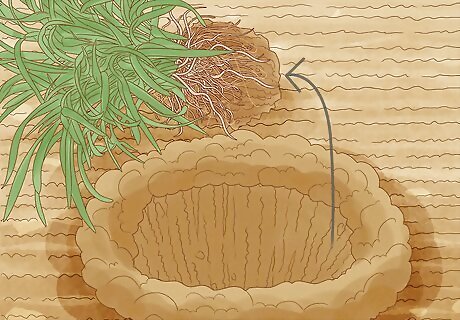
Dig up a clump of monkey grass with its roots attached. Monkey grass is a multiplying plant, so new grass grows when you replant sprigs of the plant. The clump only needs to be a few inches (about 8 cm) wide to create new growth. You may buy monkey grass in a container at the garden center. In this case, all you’ll need to do is carefully pull the plant out of the container.
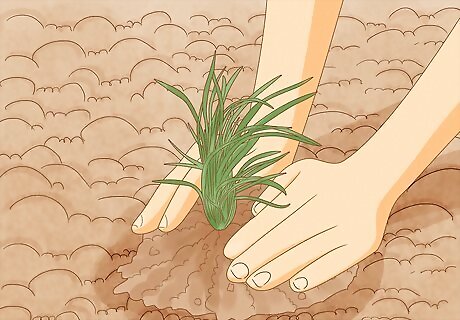
Bury the plant’s roots. In the prepared soil, use your hands to dig out a divot that’s large enough to hold the root system of the monkey grass. Set the plant into the hole and pack the extra dirt tightly around it.
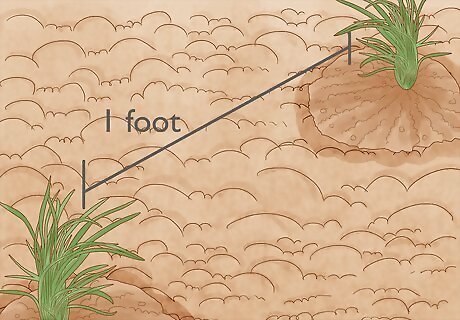
Plant each clump about one foot apart (30.5 cm). Each clump of monkey grass that you plant will spread and become more grass. When you’re planting multiple sprigs of monkey grass in a row or edge around other landscaping, leave room for the grass to spread out. Since monkey grass spreads so much, it’s often good to plant it somewhere with defined boundaries so it doesn’t grow out of control. You will need to divide the monkey grass every 2-3 years to keep it within its original location.
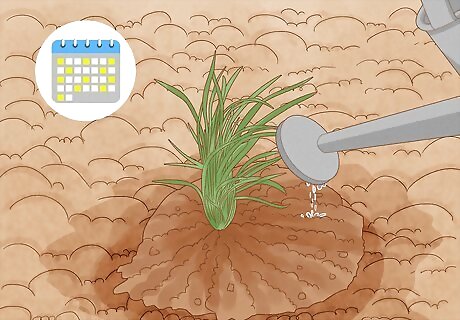
Water newly planted grass two or three times a week. Since you planted in a shady area, the soil retains more moisture than it would in full sun. Still, the transplanted grass needs a little extra water to spur it to take root in its new soil. Don’t soak the ground, but make sure it stays moist.
Maintaining Monkey Grass
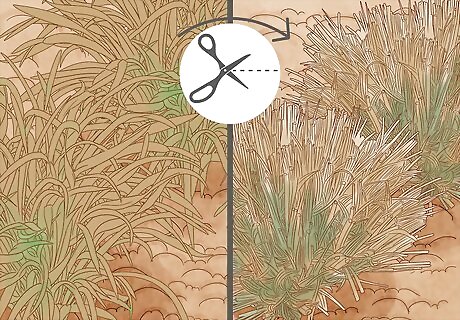
Trim the grass back early in the spring. Monkey grass goes into dormancy during the winter, but it tends to stay at the length it finished the growing season at. You’ll want to trim the grass down sometime around February, before new shoots come up. Remember, trimming a little earlier is better than waiting too long.
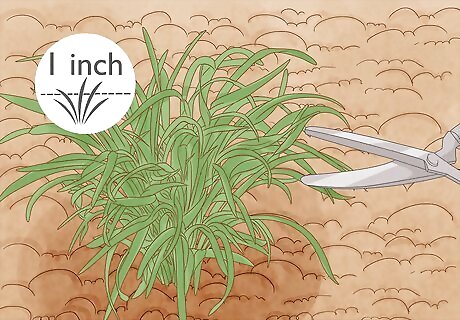
Use hand snips to cut the grass down to about one inch (2.5 cm). For small patches of grass, hand snips are the best option. If the grass is extra long, perhaps a foot (30.5 cm) or more, use a weed eater, string trimmer, or even a mower to knock the grass down. Make sure you don’t cut it all the way down to ground level. Adjust the height you trim it to fit your preference. Between one and six inches is the sweet spot. (2.5 cm to 15 cm).
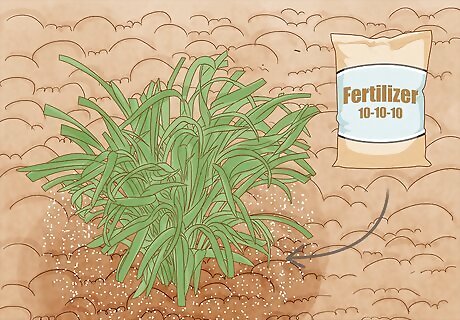
Fertilize the soil once a year after you trim the grass. Monkey grass is hardy, so it doesn’t need much in the way of fertilizer. If you want to spur its healthy growth at the start of the year, apply a long term, balanced 10-10-10 fertilizer that’s formulated to release slowly. The fertilizer you’ll want is labelled as “slow-release.”
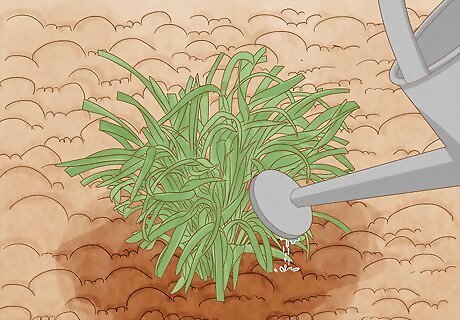
Water the monkey grass infrequently. Another benefit of this type of grass is that it doesn’t need consistent watering. Check the grass once a week or every few days, and only water if it seems to be starting to wilt or turn brown. Give it lots of water without soaking the soil when you do choose to water it.















Comments
0 comment